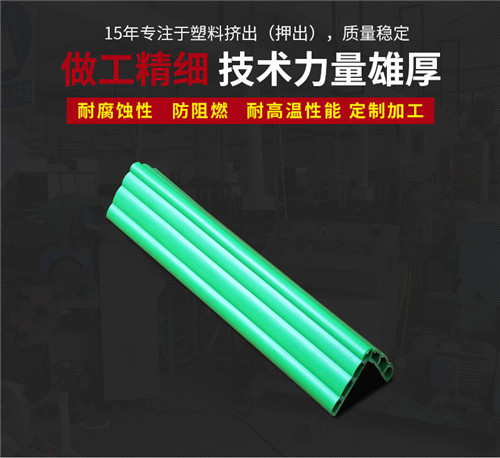
Phone Number :
07 27, 2023

The importance of environmental protection and sustainable development has become increasingly apparent in recent years. One area that plays a crucial role in both these aspects is the use of anti-collision strips. These strips are not only essential for preventing accidents but also contribute to the overall well-being of our planet. This article explores the relationship between anti-collision strips and environmental protection, highlighting the significance of sustainable development.
Anti-collision strips are primarily used to enhance the safety of infrastructure and prevent accidents. However, their benefits extend beyond just safety measures. These strips are often made from recycled materials, such as rubber or plastic, reducing the amount of waste that ends up in landfills. By using recycled materials, the production of anti-collision strips helps to conserve natural resources and reduce the overall carbon footprint.
Furthermore, anti-collision strips also play a significant role in reducing energy consumption. By improving visibility and providing clear markings to drivers, these strips help to prevent unnecessary braking and accelerating, thereby reducing fuel consumption and carbon emissions. Reduced fuel consumption not only saves money but also contributes to minimizing air pollution and mitigating climate change.
The use of anti-collision strips aligns with the principles of sustainable development. Sustainable development aims to meet the needs of the present generation without compromising the ability of future generations to meet their own needs. Anti-collision strips contribute to this goal by simultaneously addressing safety concerns, environmental protection, and resource conservation.
In addition to their material composition, the longevity of anti-collision strips furthers the cause of sustainable development. These strips are designed to withstand harsh environmental conditions, ensuring durability and longevity. By lasting longer, fewer resources and energy are required for their replacements, reducing waste generation and conserving resources over time.
Moreover, the implementation of anti-collision strips is often accompanied by proper planning and engineering. This includes considering factors like traffic flow, pedestrian safety, and site-specific requirements. The incorporation of such considerations leads to the overall improvement of infrastructure and better urban planning, which are essential components of sustainable and eco-friendly cities.
The relationship between anti-collision strips and environmental protection demonstrates the interconnectedness between safety and sustainability. By using recycled materials, reducing energy consumption, and promoting resource conservation, anti-collision strips make significant contributions to both environmental protection and sustainable development. Incorporating these strips not only enhances safety but also showcases a commitment to preserving our planet and creating a better future for generations to come.